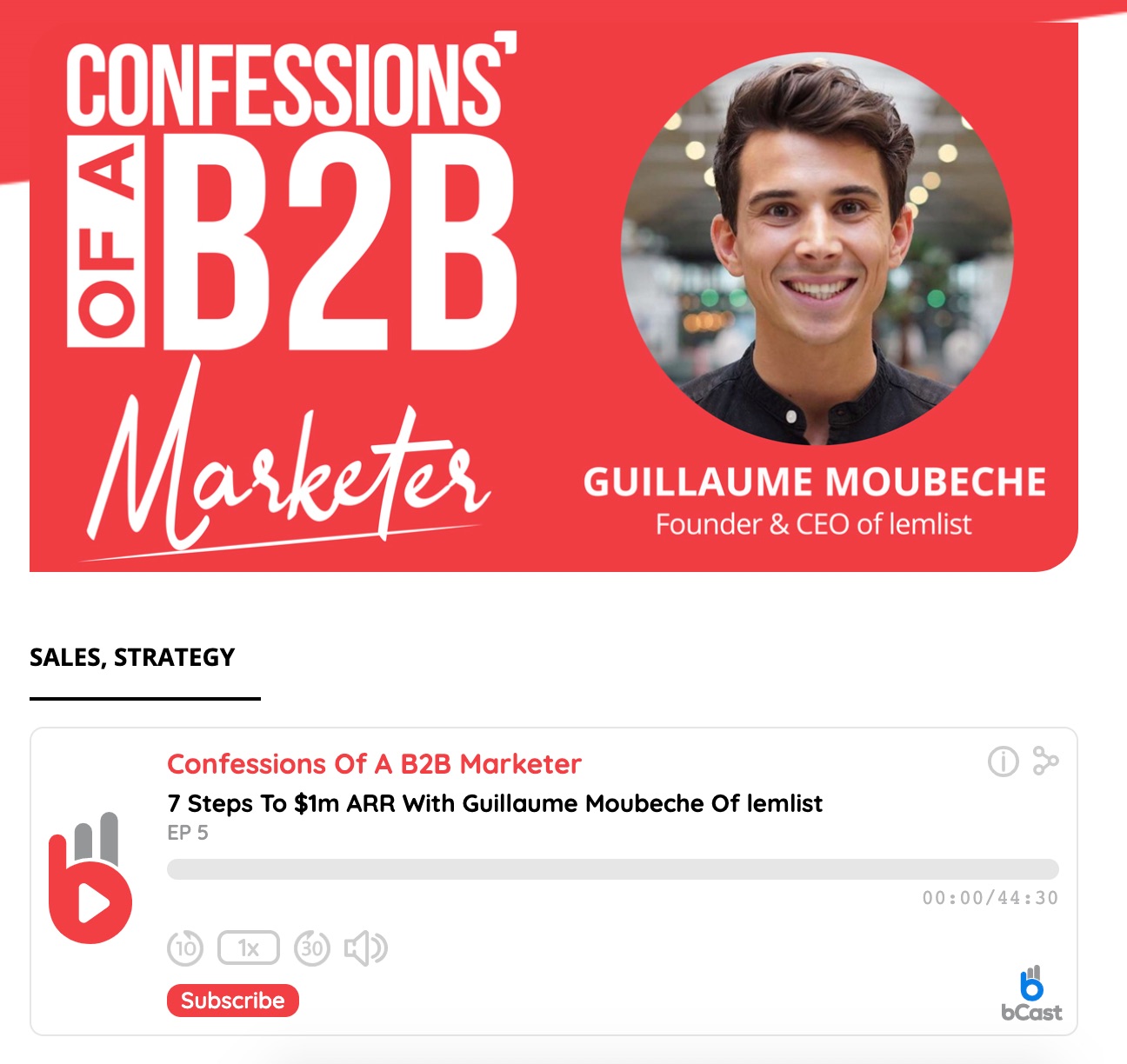It’s November 2017 and Guillaume Moubeche is living with his girlfriend, not paying rent and rightfully claiming financial relief from the French government.
He meets two technical wizards: Vianney and Francois at the startup incubator Station F, they split equity equally and start building a cold outreach email tool.
lemlist launches on Product Hunt two months later… two years later they hit $1m ARR with a very specific SaaS marketing plan.
How?
This post explains…
Growth Lever 1 – Agency To SaaS
Hands down: the most effective way to build a SaaS businesses is to first provide the service with people.
If you think about it… customers don’t actually care if people or microchips are doing the work. They care about results.
And actually, no SaaS business is purely software anyway. Each has some level of customer service… some human aspect to their offering.
We can therefore say that SaaS and service businesses are one and the same, they just exist at different places on the “low to high touch spectrum”.
Dropbox is at one end where the software almost exclusively gets the result for the customer (storing files online) without any human interaction and our “done for you” podcast service is at the other, where our software runs in the background and we do most of the work for the client.
In lemlist’s case, Guillaume first started an B2B outreach service business:
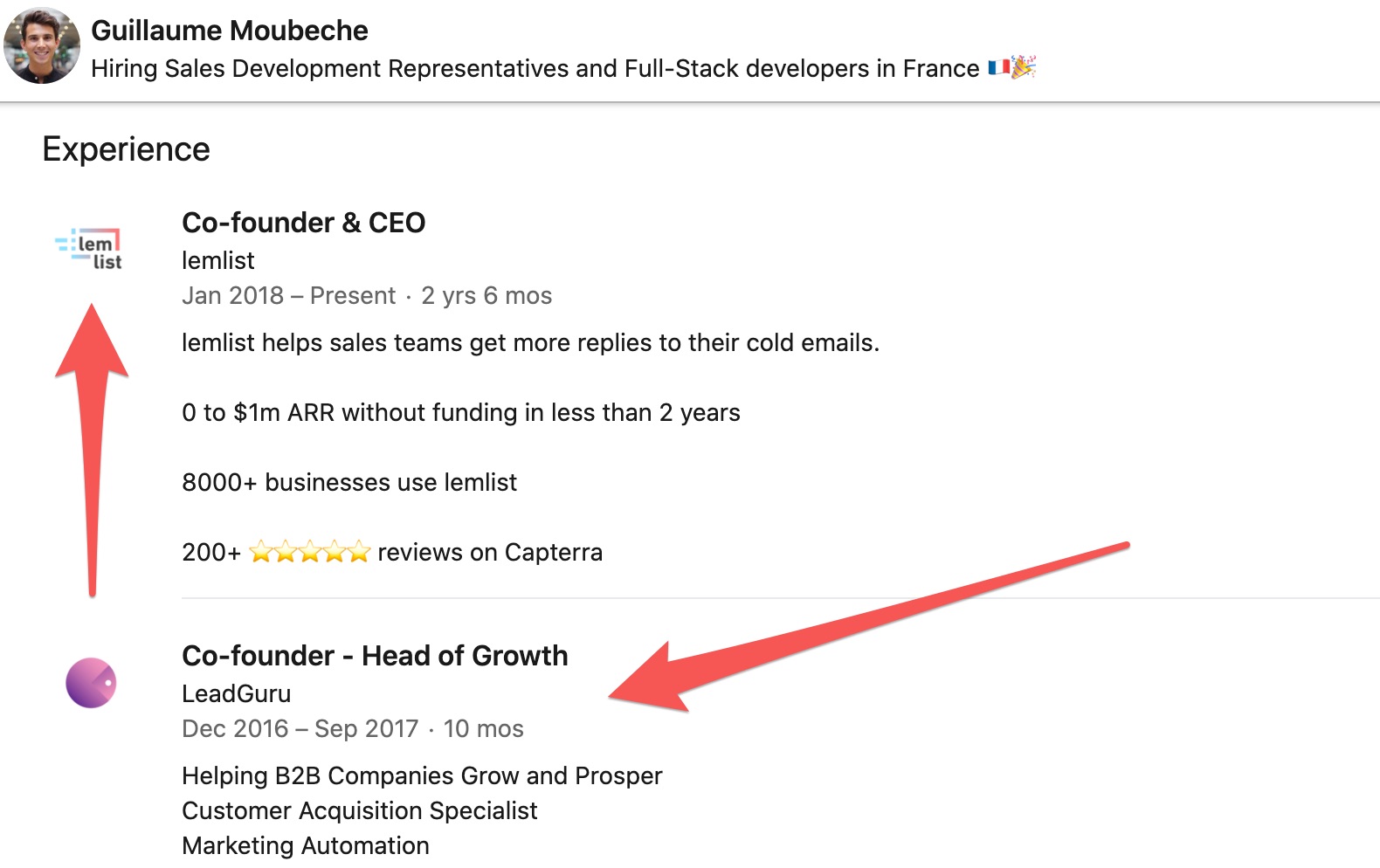
He spent 10 months adding value to the same customer persona he would later target with lemlist. At the same time this enabled him to develop a deep understanding of the challenges that persona faces.
Once you have a client list and an understanding of that specific persona, you have done the hard work as it is then a relatively trivial task to start automating parts of the process.
At first, this automation will simply improve the margins of your service business. But over time the client can start adopting the user interface and perform tasks themselves, significantly reducing their monthly subscription.
This approach also solves two further challenges with the “pure service” model:
- It’s hard to scale – people are harder to hire, mange and fire than servers
- Clients churn – Once clients understand the process, their ability to deliver in house increases and can lead to churn
Shifting to a SaaS model increases your ability to scale and also offers a viable “downsell” to those clients that ultimately would run your service in house at some point in the future.
In Guilluame’s own words:
LEARNING: If you are an agency: start building software… and if your SaaS isn’t growing: start providing the manual service.
Further Reading: MeetEdgar: From Agency To Inc5000
Growth Lever 2 – A Textbook SaaS Marketing Plan (Your First 3,654 Beta Customers)
The lemlist launch was immaculate.
Three weeks after Vianney and Francois started work on the MVP, Guillaume posts in a Facebook Group looking for their first Beta users.
And let’s face it…
lemlist’s core feature: personalised images and videos in cold emails is sexy now… it was even sexier in January 2018.
That post performs very well and is shared around various other groups… this turns out to be a blessing and a curse as an enterprising competitor states publicly that he will copy and launch this same feature.
To sustain first mover advantage, lemlist launch on Product Hunt almost immediately:
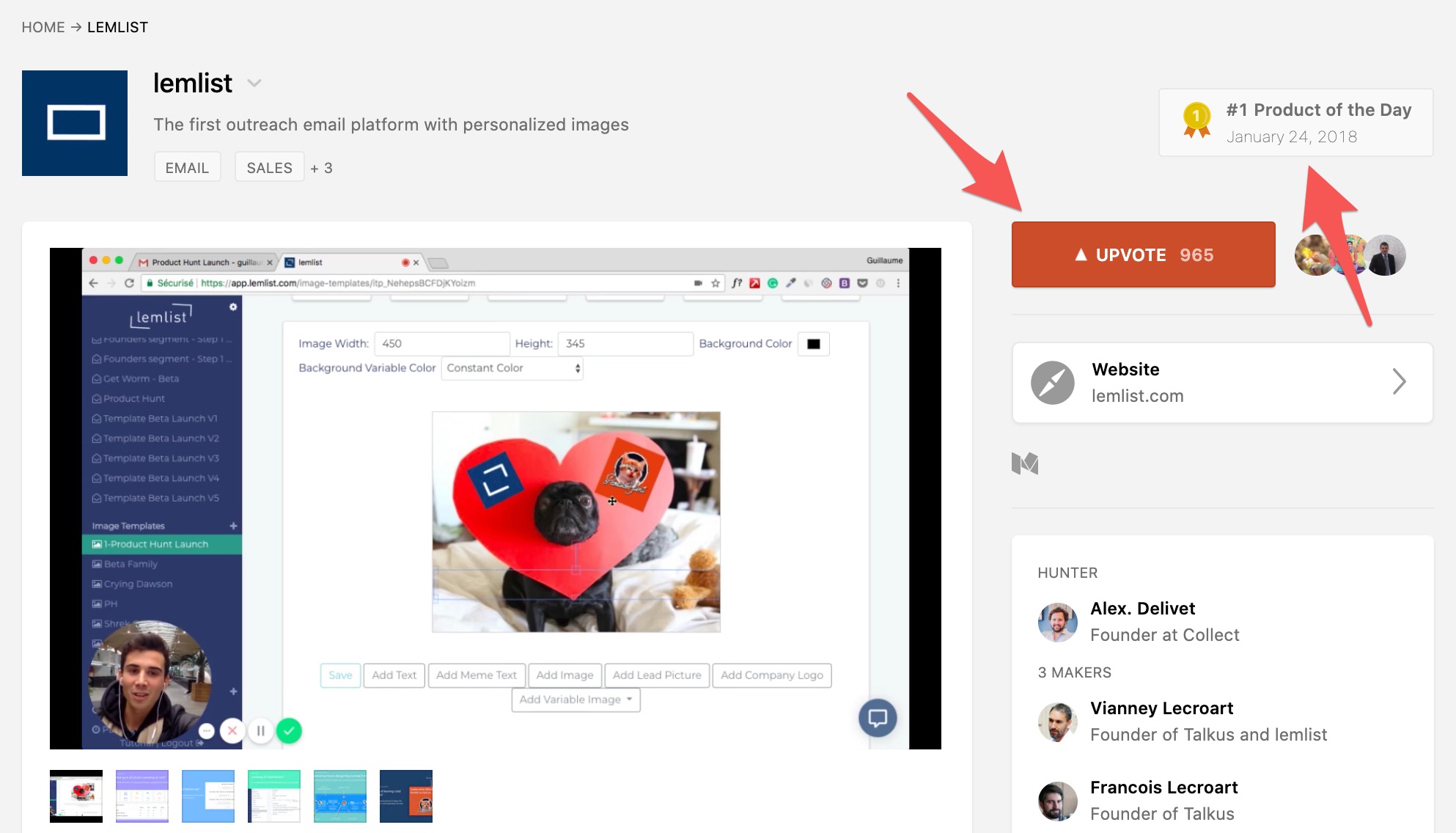
They hit #1 product of the day, driving 350 new beta users.
That’s a good start…
Oh and what I didn’t mention is that back on the 3rd of January, Guillaume get’s this email from Jeff at AppSumo:

For those that don’t know AppSumo have over 1m buyers on their email list, and allow SaaS businesses to create a lifetime deal that they promote to the audience for a 70:30 split.
On February 26th 2018, the lemlist lifetime deal goes live to the community.
Over the next two weeks, they gross $161,896 in sales from 3,304 customers. At 30%, this puts just under $50k into lemlist’s bank account.
The business is now seed funded.
But that isn’t the core benefit of an AppSumo launch: the world now knows about lemlist and their core feature. They are the first mover.
In the space of two months, lemlist has gone from not existing to becoming the leader in a specific section of the cold outreach market.
LEARNING: How can you go from MVP to awareness and then first customers in the shortest time possible?
Growth Lever 3 – Building A Cult
It’s a Saturday morning, the girlfriend is sleeping and I’m casually scrolling through lemlist’s Sales Automation Family Facebook Group… I see this:
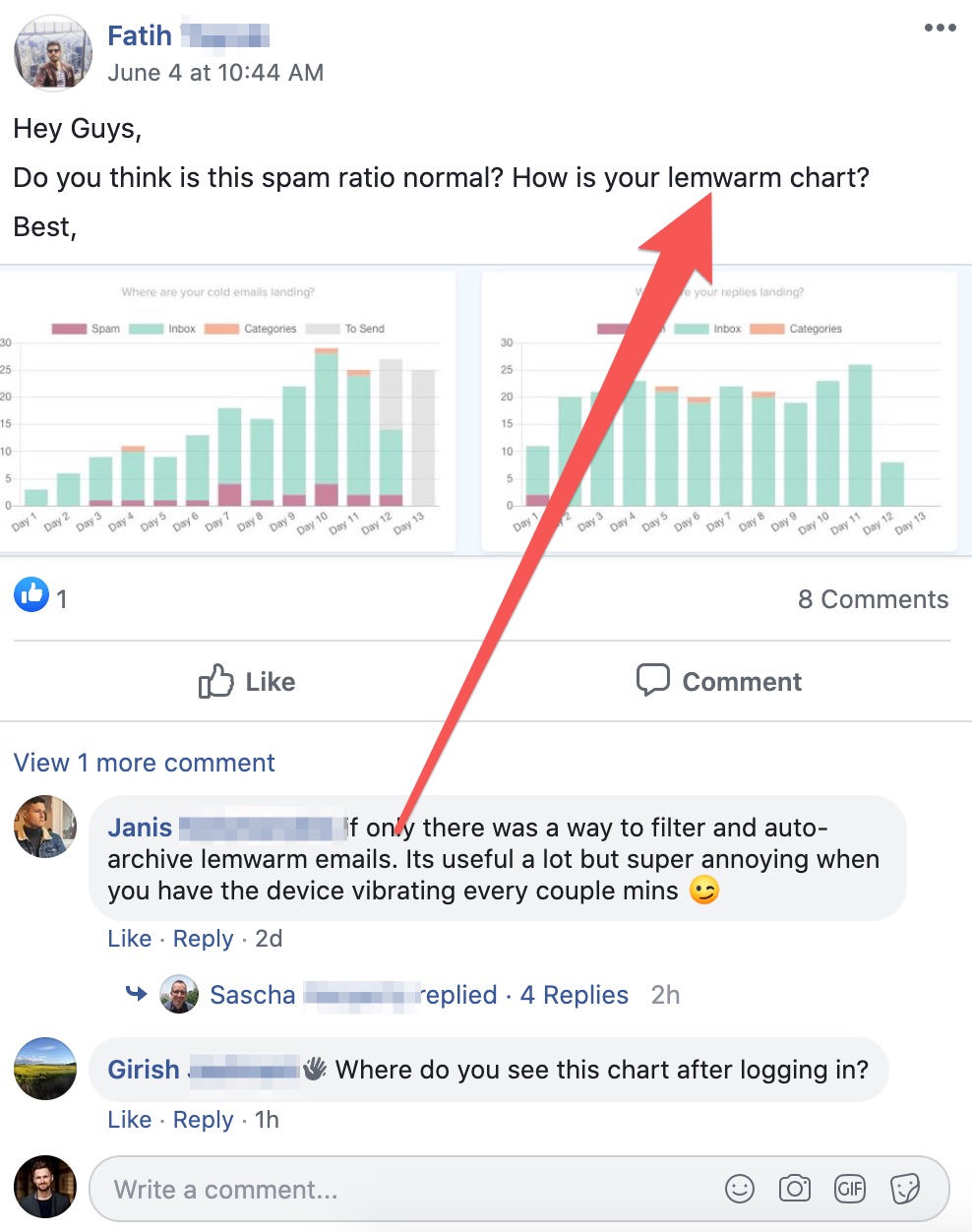
I mean, WTF is a “lemwarm chart”?
In my research for this post I also found something else that confused me:
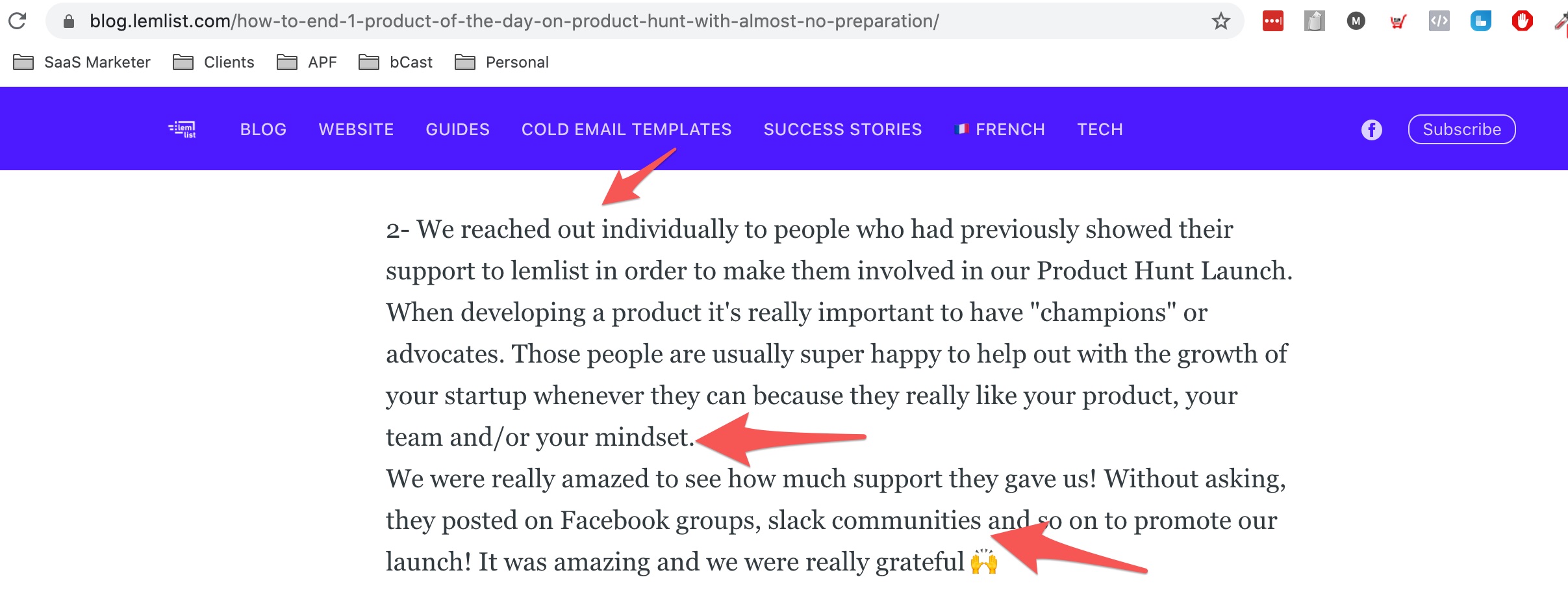
The lemlist team simply “reached out” to people that had previously supported them to request further support for their initial Product Hunt launch… and these people went around posting into other communities… for free?
Very strange. Why would they do that?
And then it hit me…
Shared language (e.g. lemwarm) and shared principles (see below) are two defining characteristics of a cult.
Shared language is required as members need a way to recognise each other when out in the normal world:
- lemwarm – a feature within lemlist
- lempire – the collection of lem products
- lempod – a separate product ($220k ARR)
- lemtalk – another separate product ($60k ARR)
Each of these words also act a reminder for the cult’s organising principles:
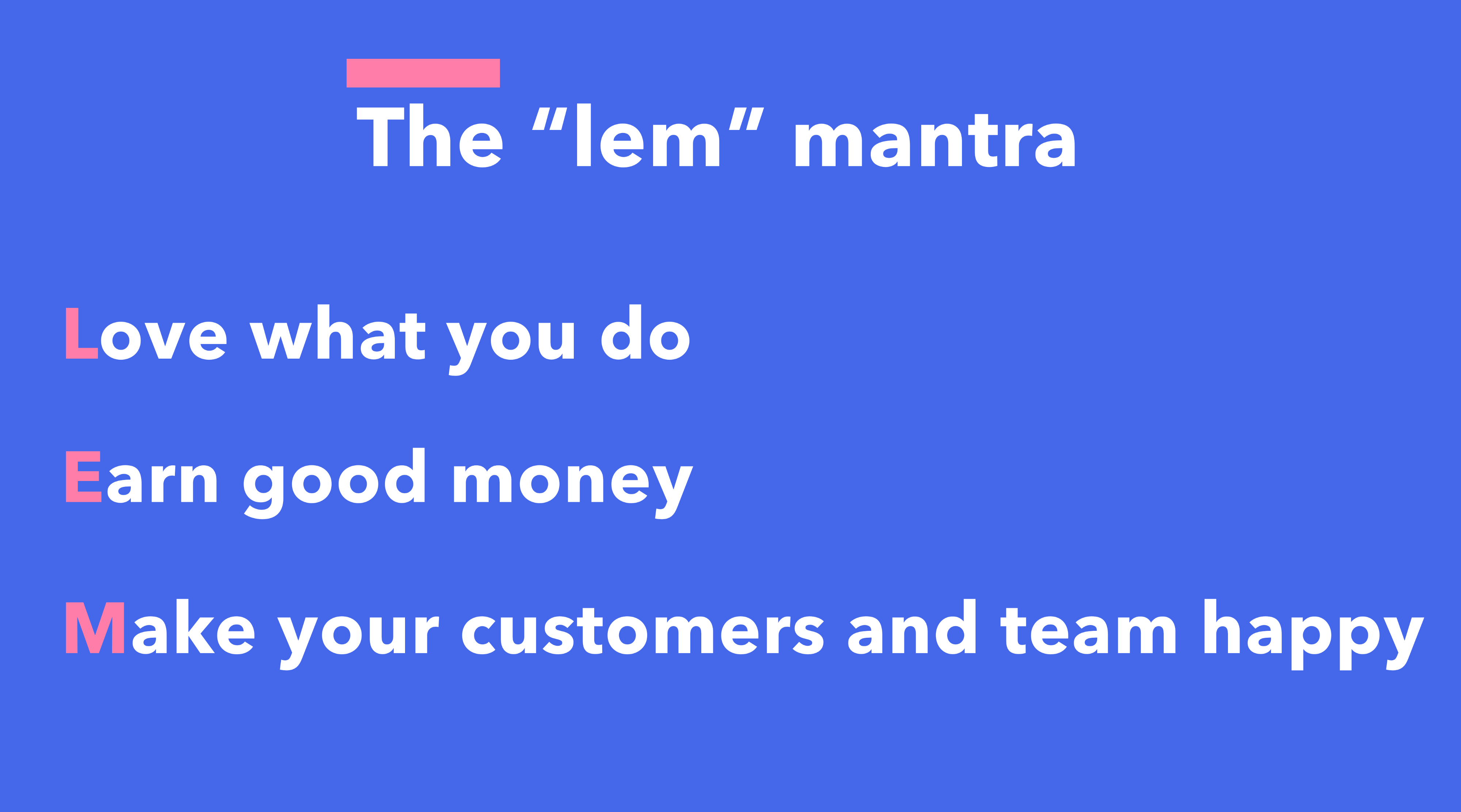
Shared principles allow the cult to trust each other enough to form mutually beneficial long term relationships.
Shared language and shared principles.
What are the benefits of building a cult?
Evangelism
If you Google “lemlist review” their page on Capterra ranks first with a chunky 275 reviews at an average of 4.6/5.
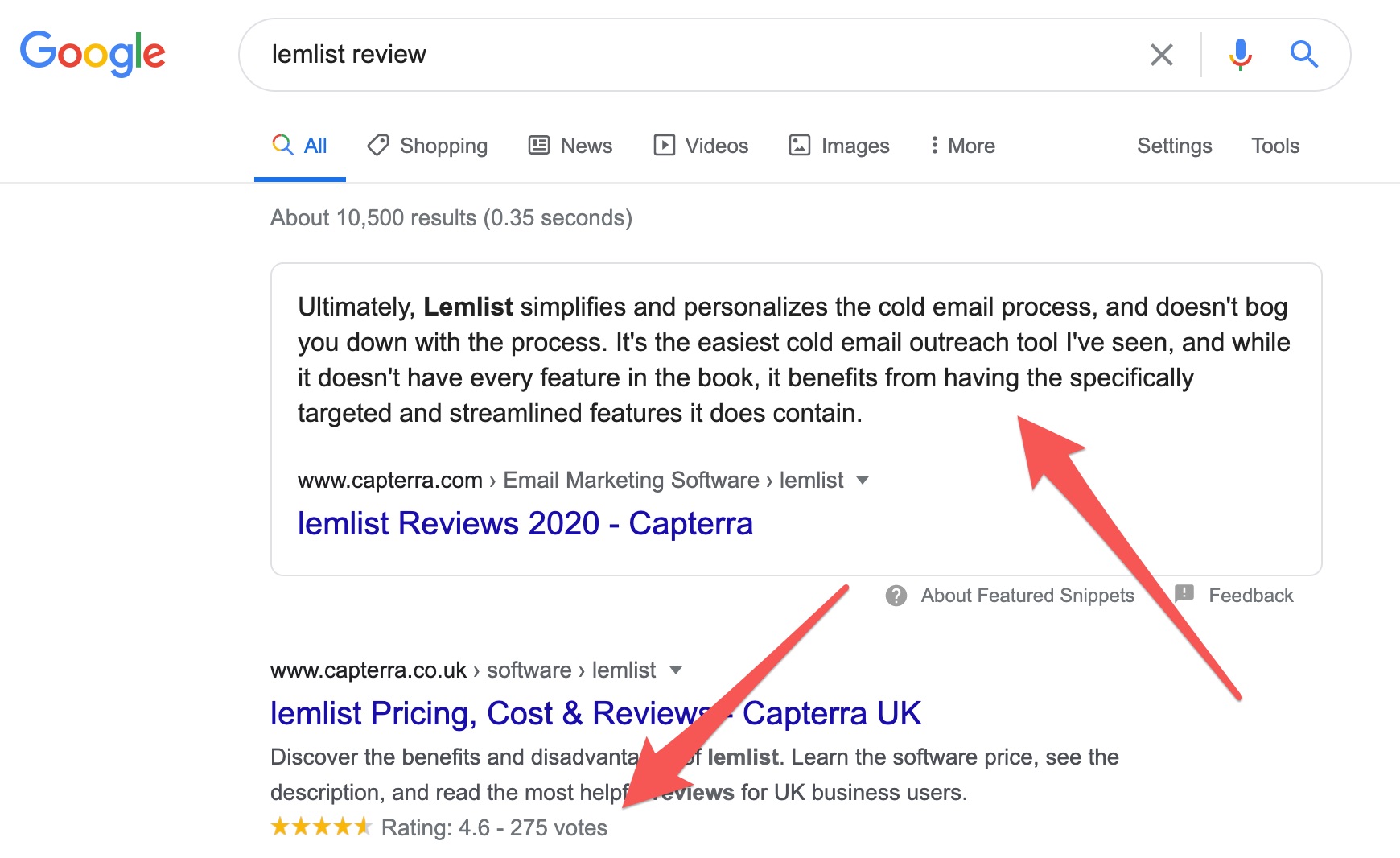
(Shout out to Capterra for the featured snippet, I assume this helps them dominate rivals in search)
The first Capterra reviews came from early AppSumo lifetime customers. Capterra take your email addresses and then run them through a review campaign, this typically results in a 5-10% review rate. The lemlist campaign hit 15%.
This is the power of the cult. If you are able to “indoctrinate” people in to your way of thinking and support them in achieving their goals… they will repay you many times over.
To test this theory, I headed to the SaaS Marketer Facebook Cult Group to see if we had any “lemlisters” in our ranks:
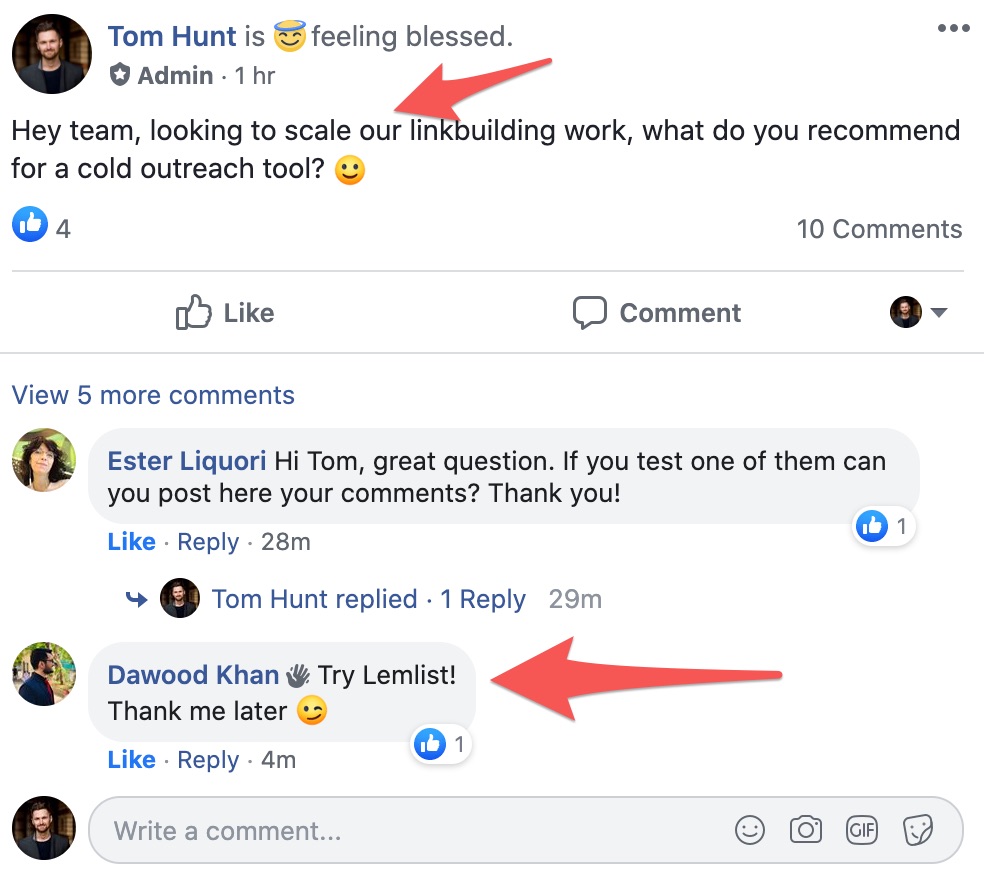
It turns out we do…
LEARNING: How are you indoctrinating your community into the cult of your SaaS?
Growth Lever 4 – Giving The Brand A Face
On November 30 2015, Kylie Jenner started selling Kylie Lip Kits, a liquid lipstick and lip liner.
Four years later, Coty Inc bought a 51% stake for $600m.
Now I’m sure there was a whole lot of work that went into building products, marketing and distribution but I think that if we were to look into the Kylie Cosmetics (they rebranded) growth story that I think we would find that Kylie’s fame played a big part:

Their site is picking up a 29,702 organic session from her name alone.
People like to follow people, not brands.
Anyway, enough of the Kardashians…
How are lemlist using this to their advantage?
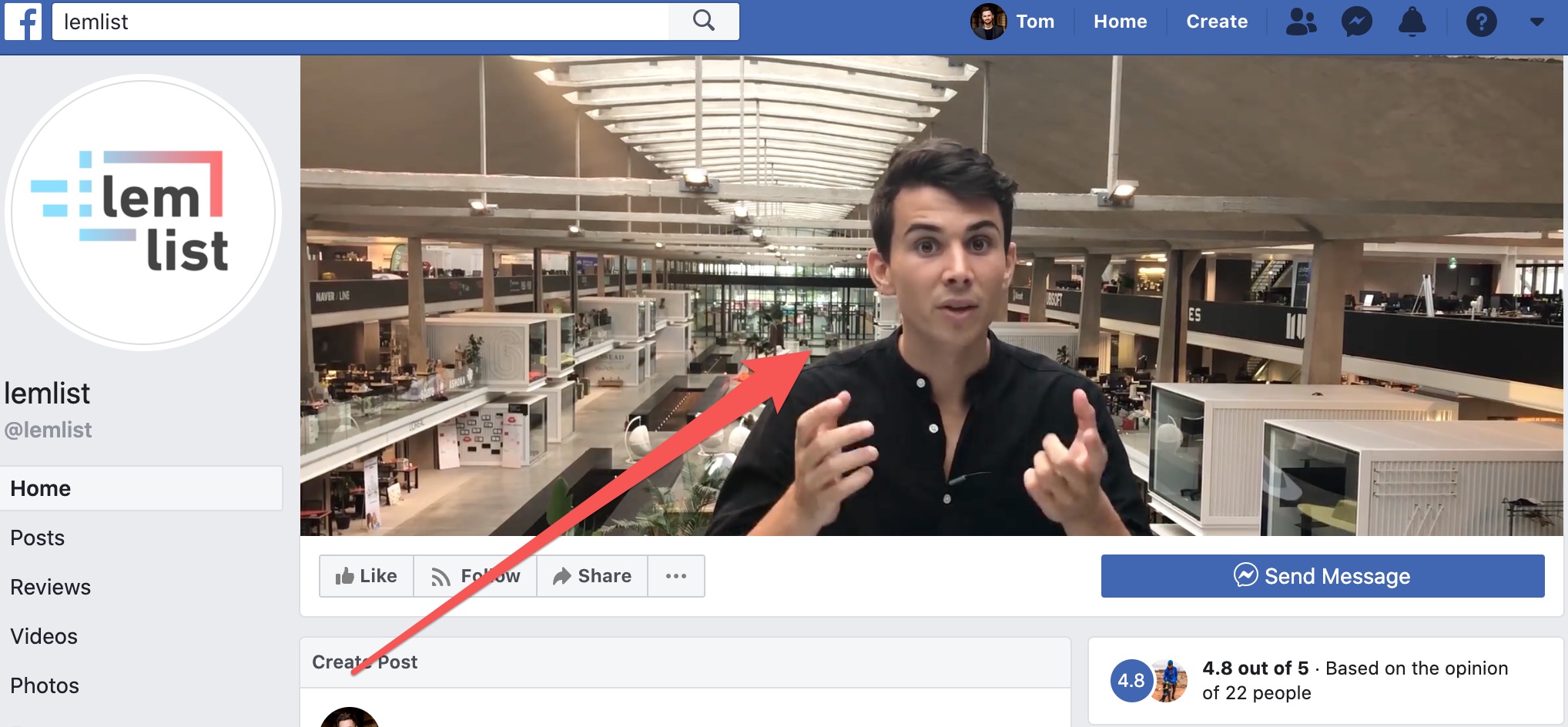
Meet Guilluame Jenner… sorry I meant Moubeche.
All jokes aside, it’s fair to say that Guilluame is the trusted face of the lemlist brand. He’s everywhere:
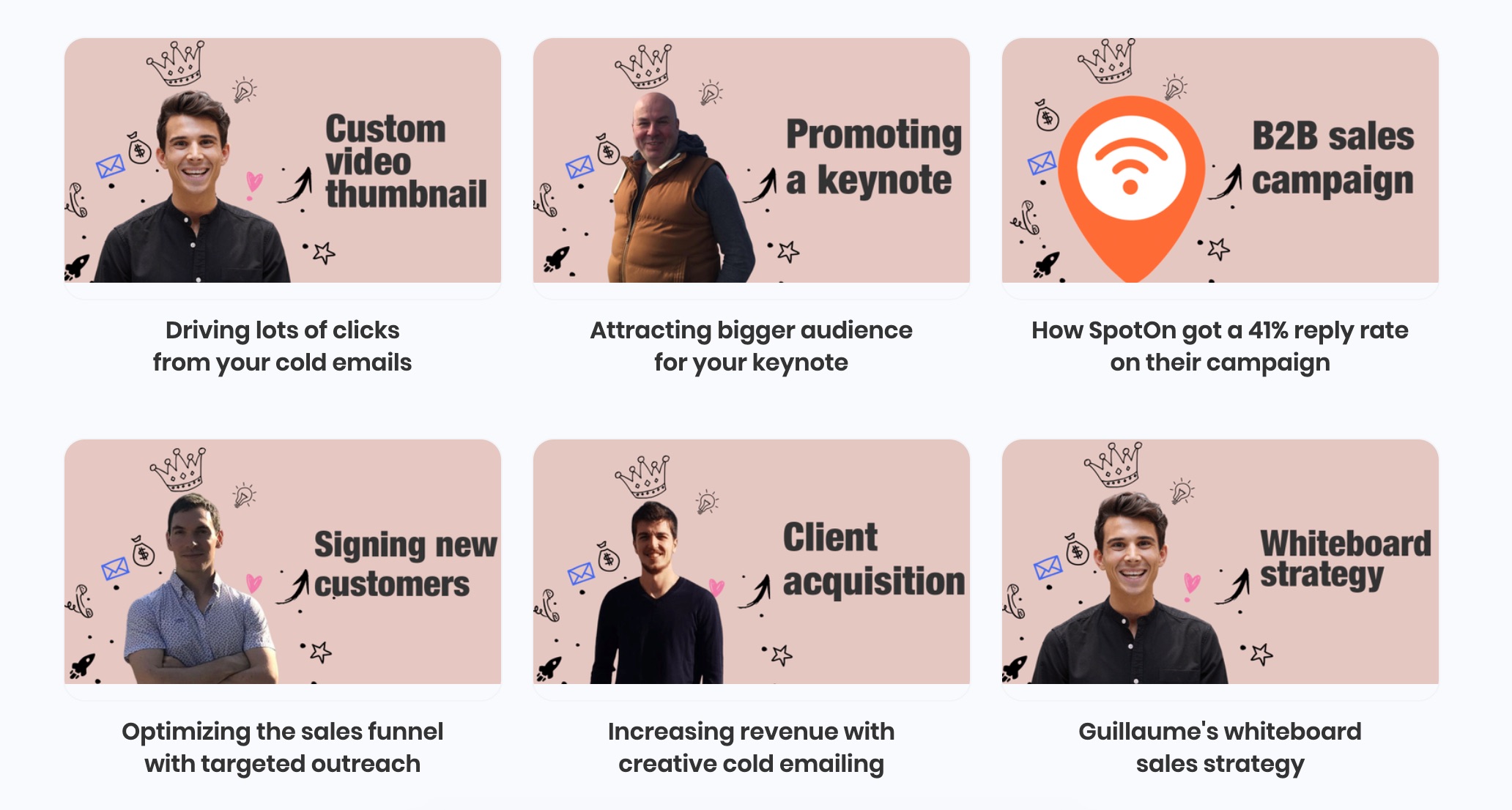
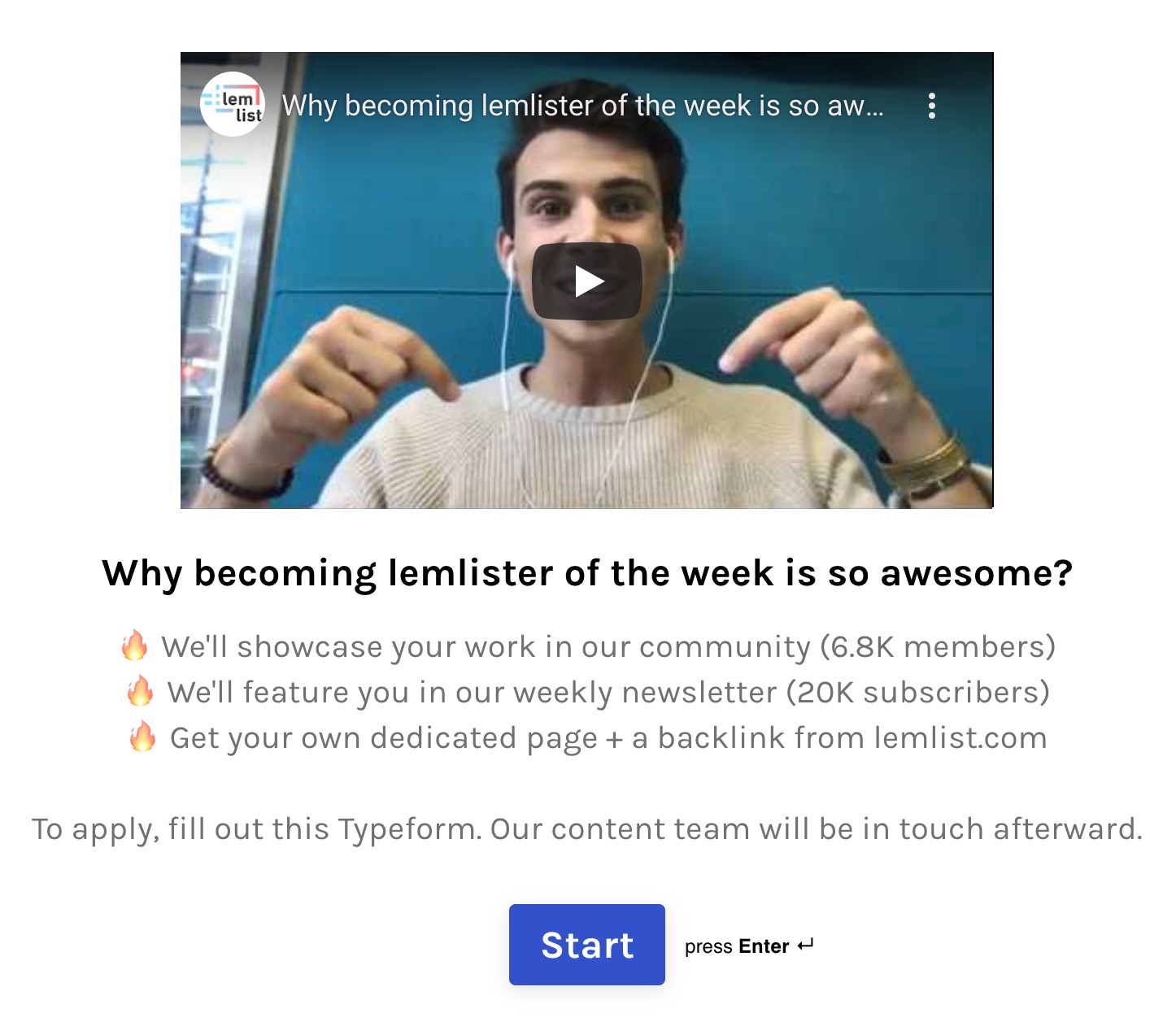
And how did Guillaume kick off this fame flywheel?
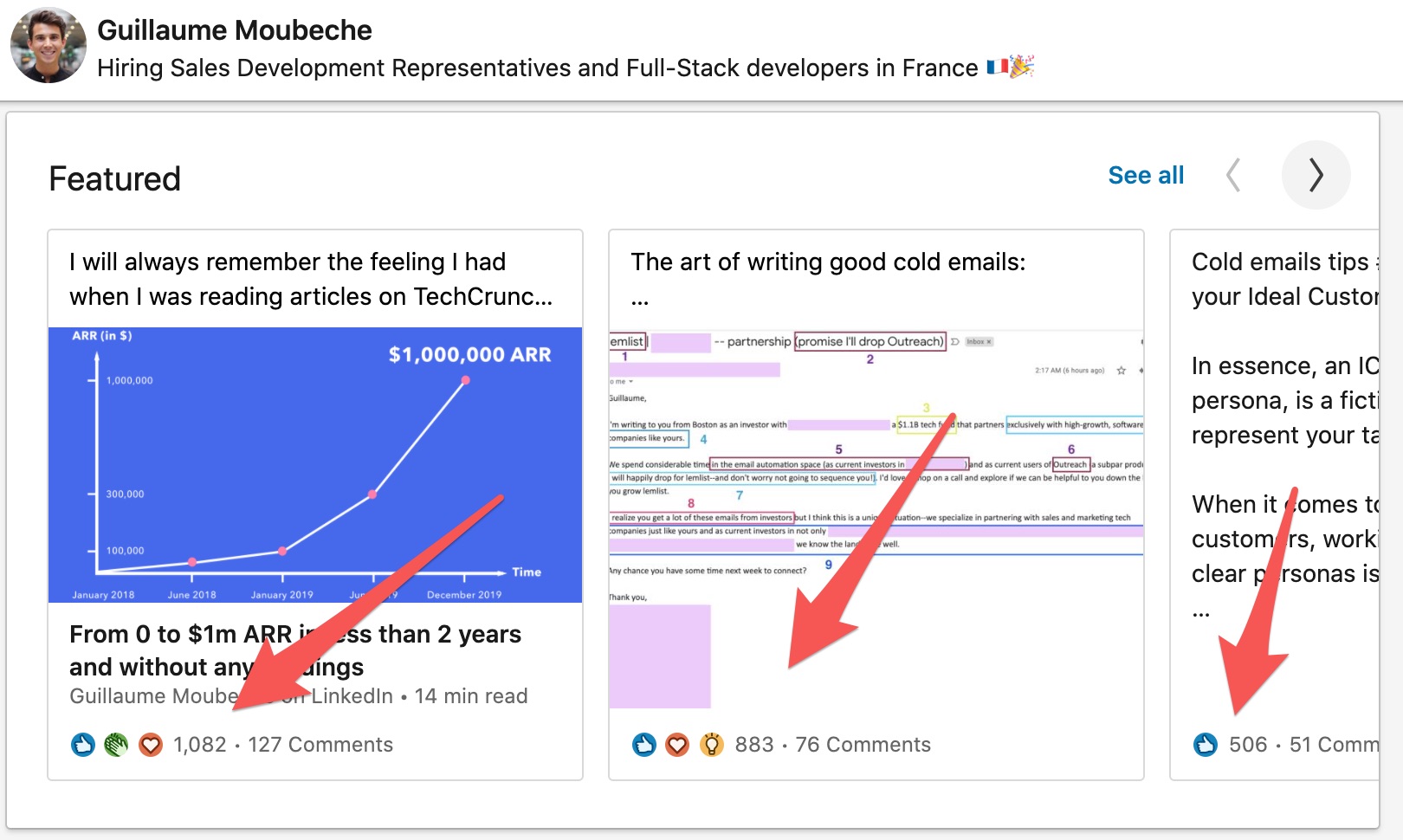
Just as Linkedin engagement was going through the roof in 2018/2019, Guillaume was there sharing high production value, purely value add videos… sucking up all the cold email eyeballs right in front of their competitors eyes.
And not that he needs any help… but let’s get Guillaume to 20k Linkedin followers:
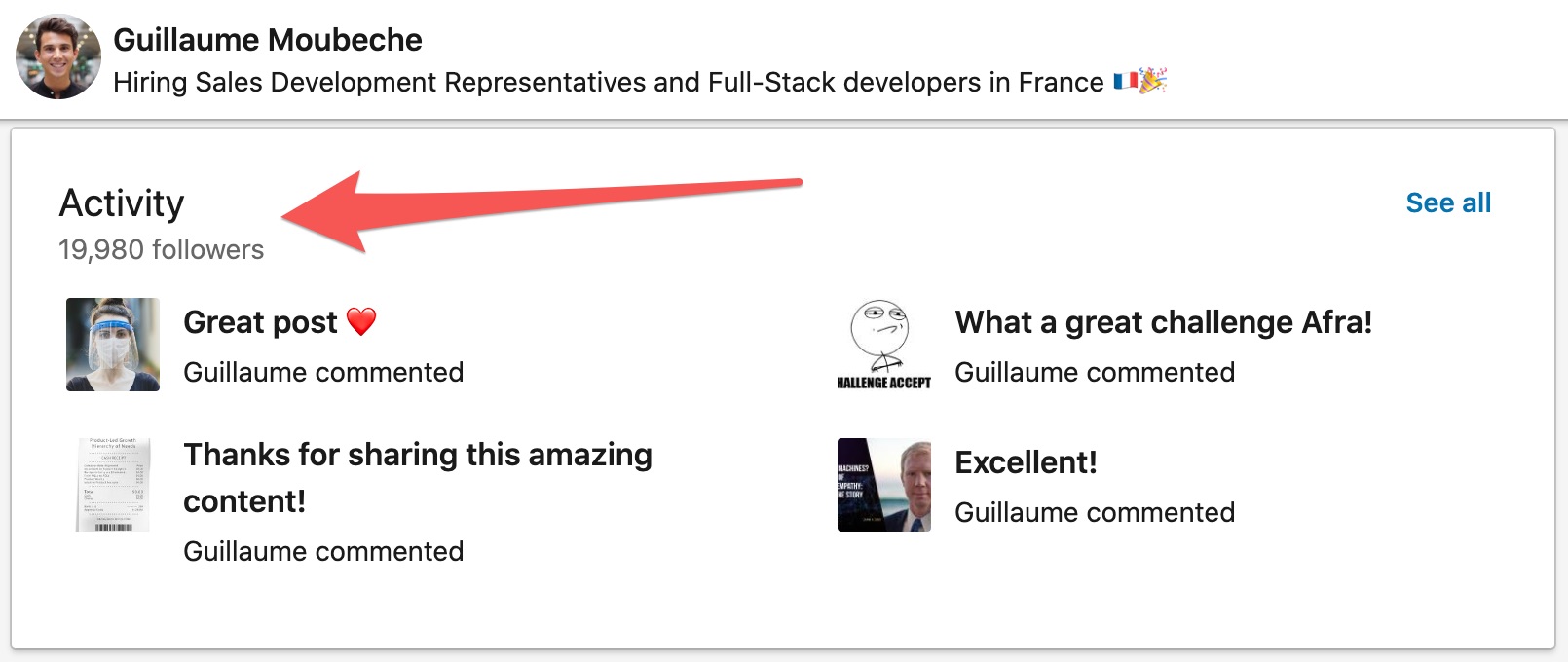
Hop over there and give him a follow: https://www.linkedin.com/in/guillaumemoubeche
LEARNING: Who is the face of your SaaS and how can you make them more famous?
Growth Lever 5 – Brand Aligned Content For The People
Since launching in January 2018, lemlist have released a new high quality blog post each week, like clockwork.
But that’s not all…
They didn’t build a big list of keywords and slowly grind through them optimising the value out of the content.
Nope.
They wrote solely for their audience, almost forgetting about search engines.
If you really think about what’s going on here… lemlist are not ignoring Google.
lemlist are trusting Google.
They understand that Google is better than any of us could ever be at understanding whether content is good for people.
And therefore, instead of trying to trick Google into thinking that a blog post is good for users with onpage optimisation, alt tags and LSI’s… all of lemlist’s energy is invested creating something that is great for users.
And therefore placing reliance on Google to rank the content for the keywords most suited to the article.
Here’s Guillaume on how this approach to content led to their best backlink:
At the same time, lemlist also ensure that all content follows very specific brand guidelines. This helps to ensure that their content becomes “memberable” in the vastly competitive sales automation space.
Check out their guest posting guidelines for example:
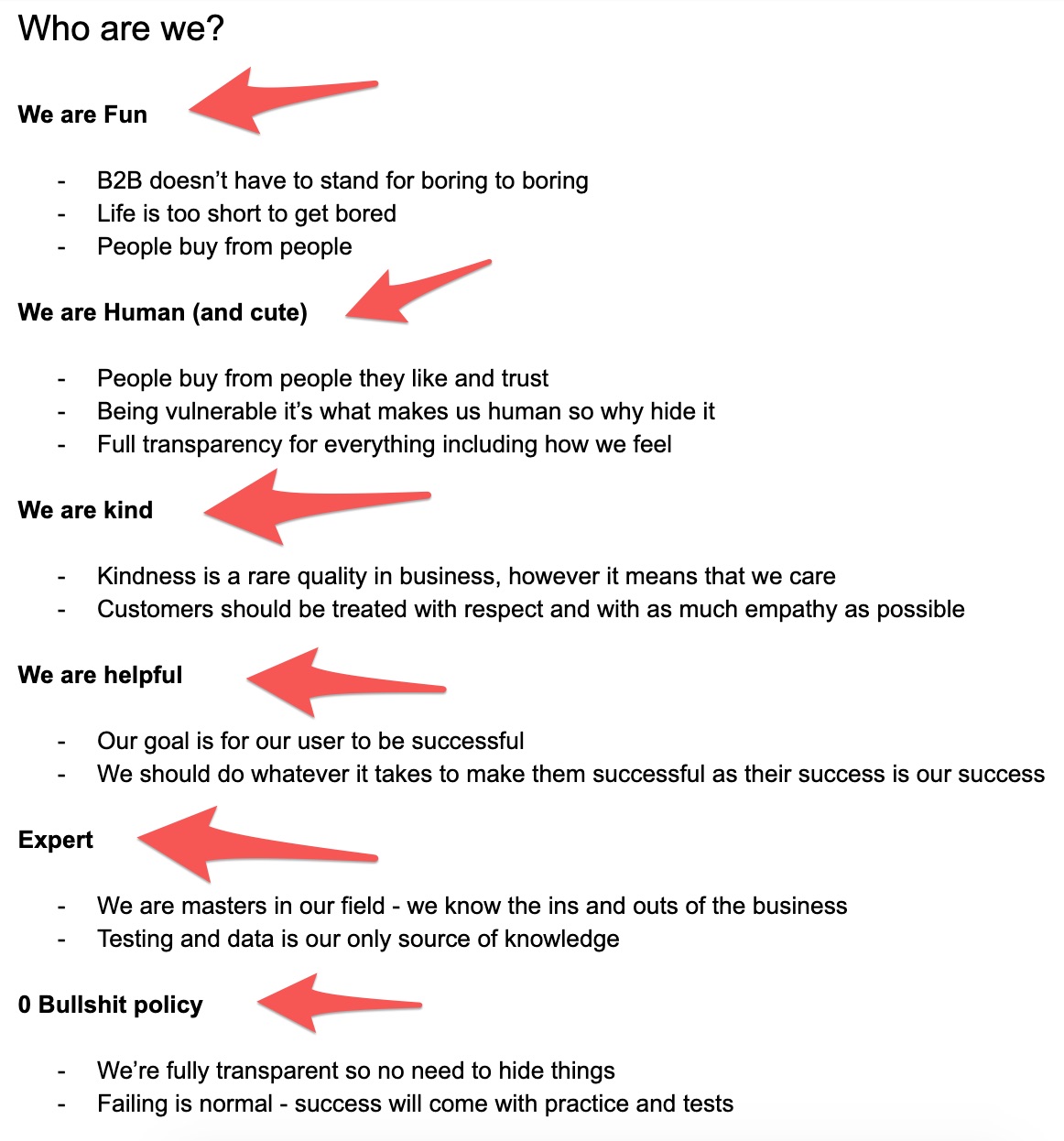
Take this bad boi, it’s 4k words, value packed and its language and ethos aligns perfectly with the lemlist brand.
Now I hear all your direct response players out there shouting at your screen: “why bother invest in brand when you can just get an ROI through direct spend?”
And I feel you, my background is direct response. I bought Google Ads for local locksmith services in Chicago in 2013. This venture netted me approximately $57.13.
Instead, if I spent seven years building the biggest authority brand in the locksmith space, I could in theory be monetising large amounts of organic traffic… like lemlist are:
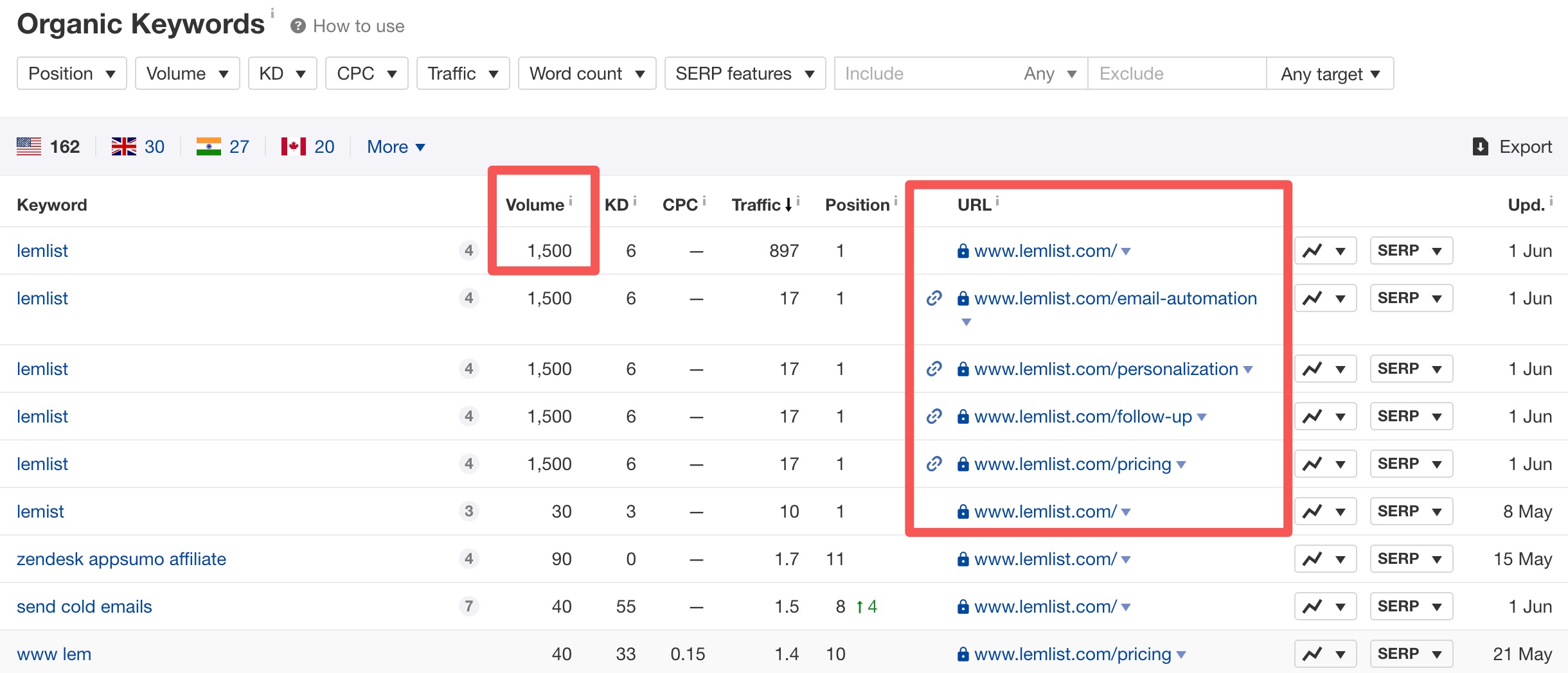
LEARNING: Throw out your “keyword strategy”, write up your brand guidelines and start trusting Google with your content…
Growth Lever 6 – Canine Cold Outreach
I used to be completely indifferent to dogs. In fact, I even used to hold a little disdain towards those selfish creatures.
Didn’t really care, had basically zero emotional response whenever I saw or heard one.
Until we got Bear:

And now I can’t help but talk in that stupid voice whilst allowing them to lick my face.
Similar to coffee, those addicted have an emotional reaction when exposed to such a potent stimulus.
Now if you’re reading this and don’t have a dog or drink coffee that is fine, the value behind this growth lever does not rely on your canine or hot beverage preference.
We’ve all received the generic cold email that lacks even a hint of the character of the person trying to claim our most precious resource: attention.
So what is Ugi doing here?
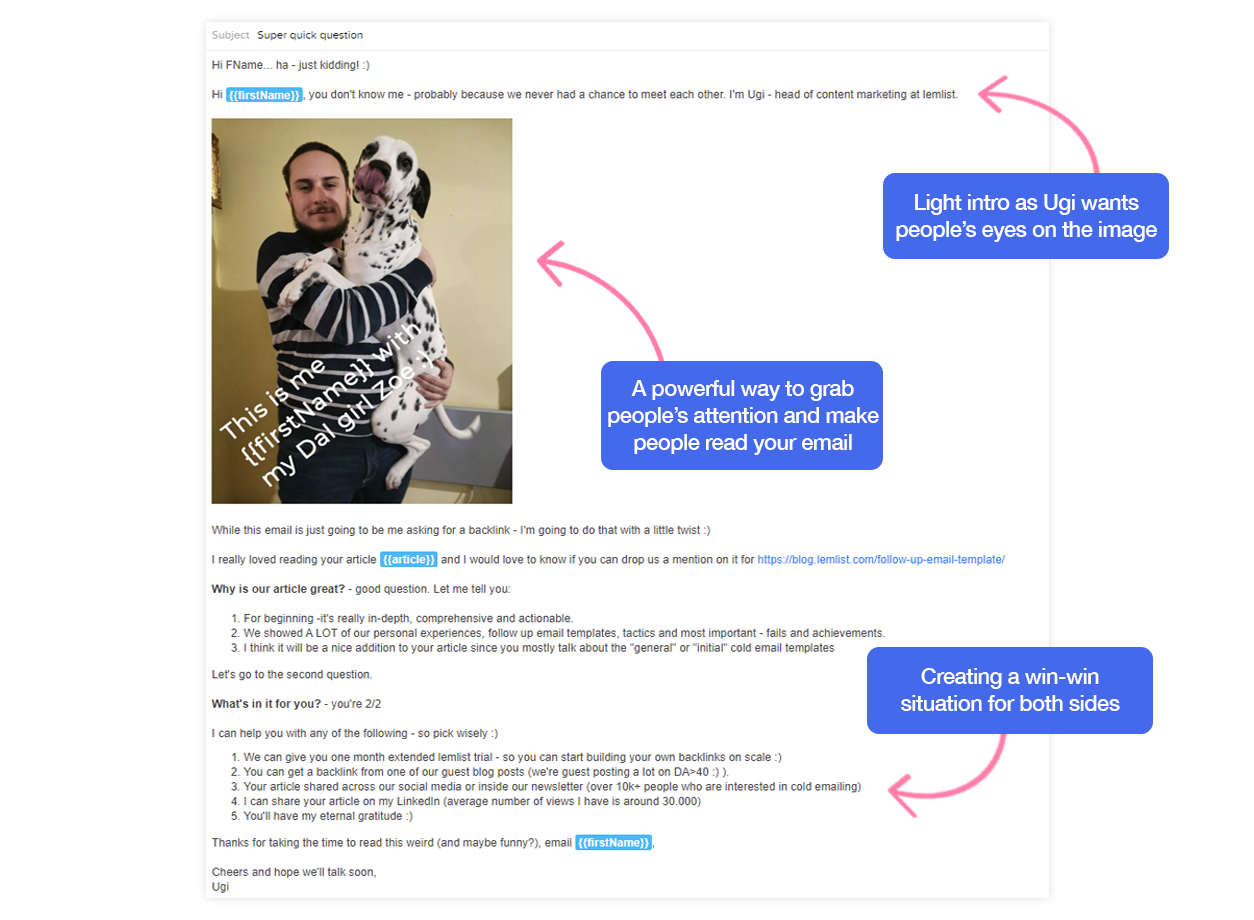
Thankfully lemlist have already done my job for me ^^.
He’s writing person to person, and he shows character.
Apparently 50% of replies to that template include an image the prospects own pet.
And the results?
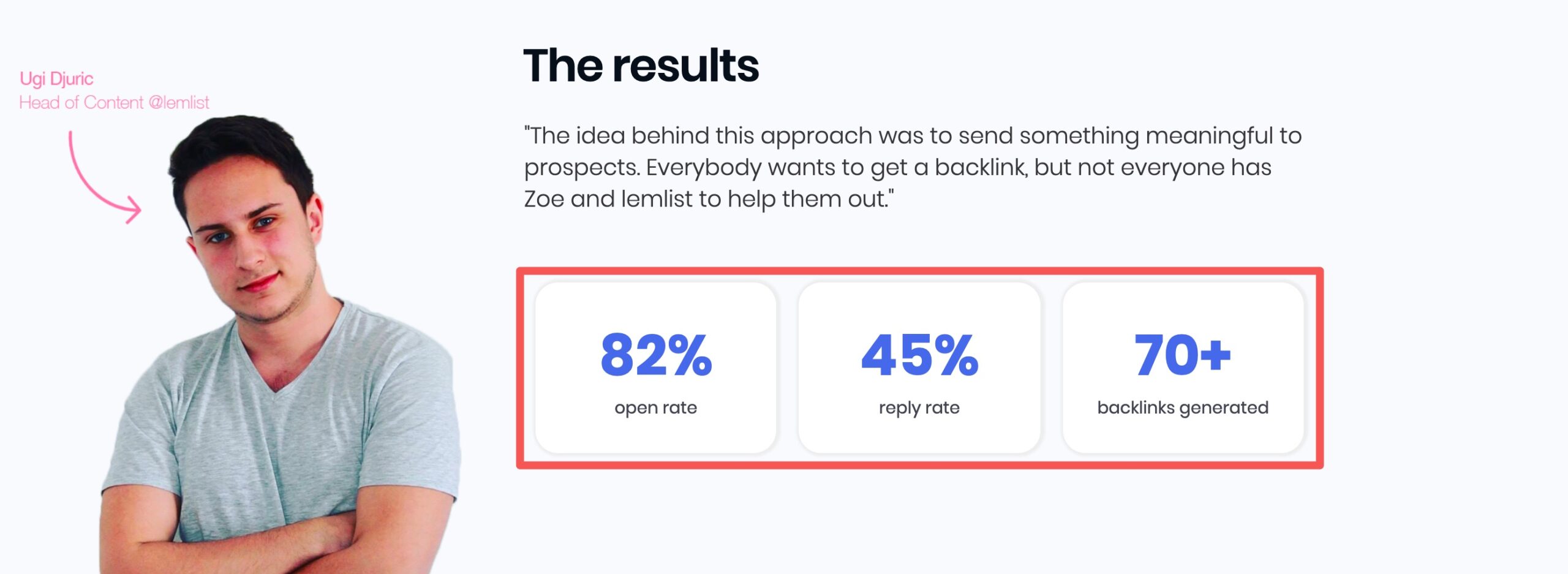
Ugi reports that this strategy is currently generating 1-200 backlinks each month.
LEARNING: How can you inject dogs, coffee or some other emotional trigger in your cold outreach?
Growth Lever 7 – Piggybacking Audiences
lemlist understand that other people in their niche have an audience of their ideal customers.
They then collaborate with these people in order to create content that can be consumed by both their audience and the audience of their partner.
This exposes the lemlist brand to the partners audience at relatively low cost (just the amount of time spent on the content creation).
This is a massively under-utilised SaaS growth strategy.
Let’s take the “godfather of SaaS sales” for example: Aaron Ross.
Guillaume brought Aaron in for an interview in The Sales Automation Family Facebook Group:
That is an example of lemlist creating content and bringing in an external partner to collaborate and then ideally having the partner share the content with their audience.
Here’s Guillaume on how they influence influencers to share content:
In another example, Guillaume features in a partner’s content creation process, exposing the lemlist brand to their audience.
Chris Von Wilpert attempts to build a $10k per month content marketing agency publicly, and to do this, he’s using cold emails.
Of course, during this case study, he’s using lemlist.
As Chris teaches the process of securing agency clients using cold email, he’s using lemlist functionality and brings in Guillaume to feedback on his work:
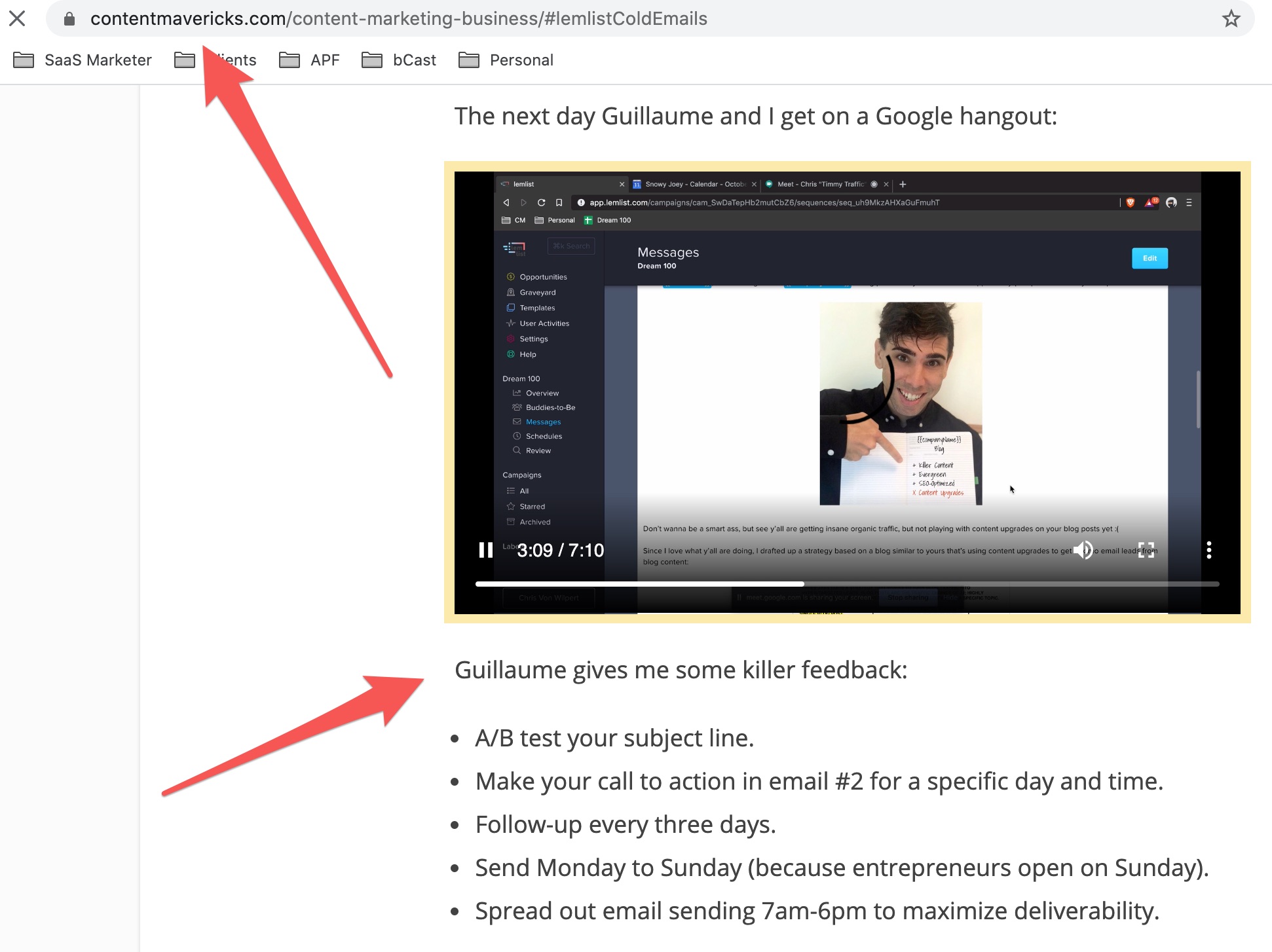
I’m assuming that here, Guillaume’s time and expertise act as the “sponsorship” payment in exchange for a couple of backlinks (DR: 33):
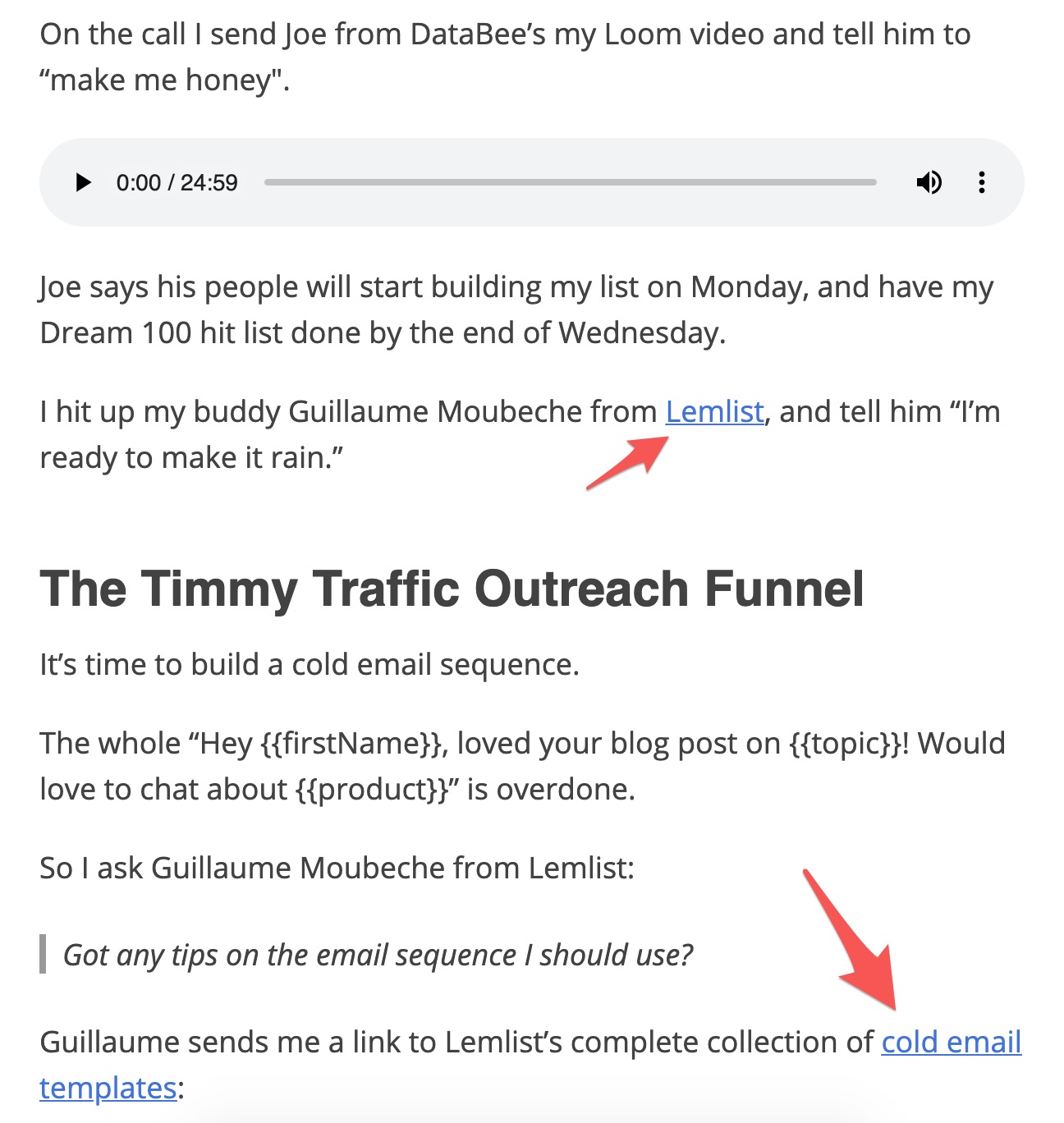
And lemlist’s exposure to one of their ideal customer segments, small marketing agency founders:
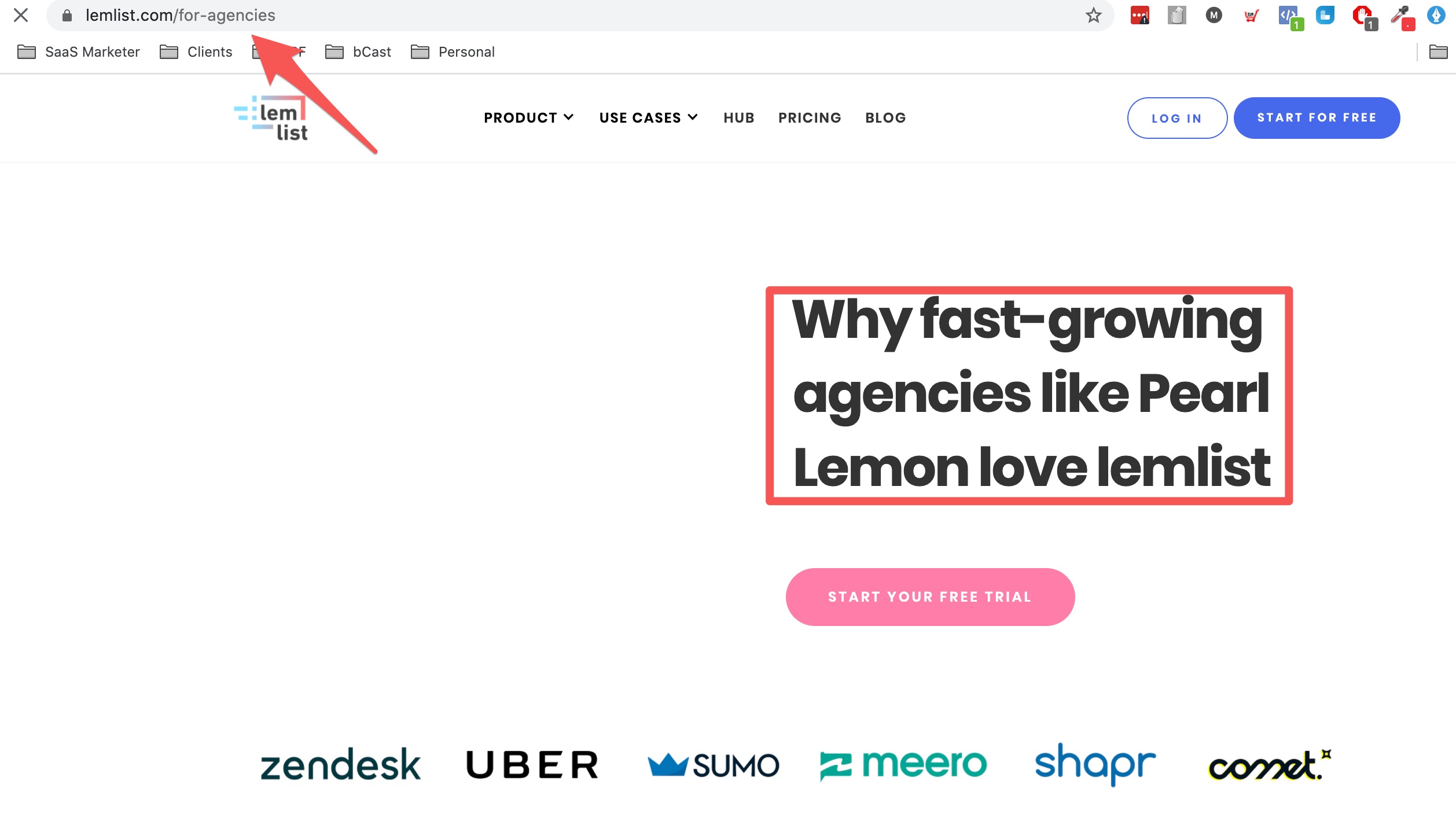
In which case, let’s say approx. one hour of Guilluame’s time in exchange for thousands of impressions and a couple of high quality backlinks is most definitely a worthwhile exchange.
LEARNING: Who has an audience of your perfect customers and how can you create content with them to expose your brand to this audience?
Growth Lever 8 – Actionable Case Studies
- Product marketers have this real obsession over case studies
- The CS team has this real obsession over case studies
- The CEO has this real obsession over case studies
It makes sense, the case studies make them look good. It shows others that they’re doing their job.
But sometimes at the expense of growth.
Why?
Because most case studies are rubbish.
Bland stretches of text with watered down quotes that may or may not inspire a new customer to buy.
And this is why today… we’re going to make a stand.
We’re going to suggest that marketers take back control of the case study, just like lemlist:
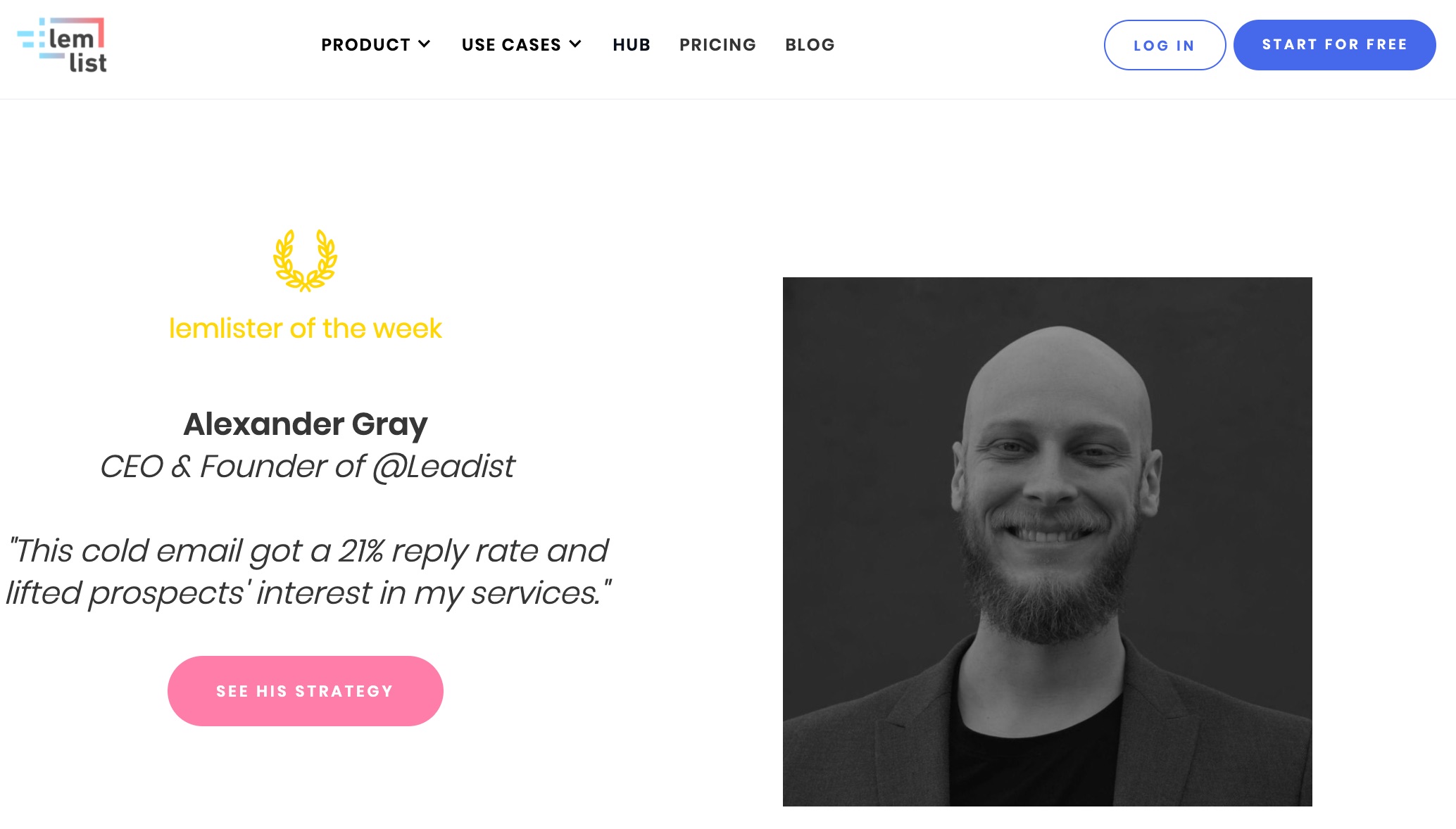
So what’s going on here?
Well, first of all these case studies are optimised for a big keyword and share numbers people care about:
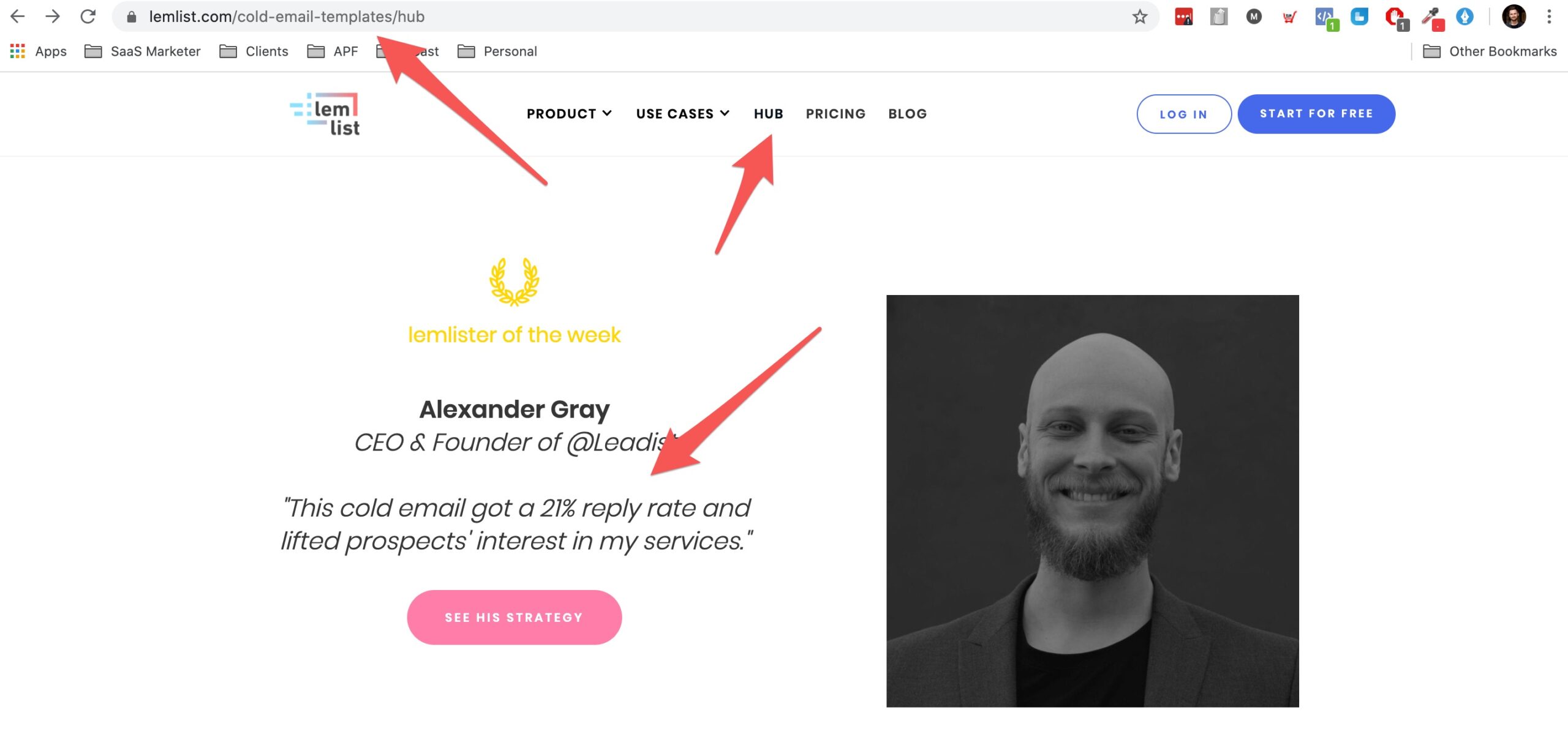
Each week, a “lemlister” is featured, you apply here and of course, you must be a paying customer. You’re also doing part of the work to create the case study:
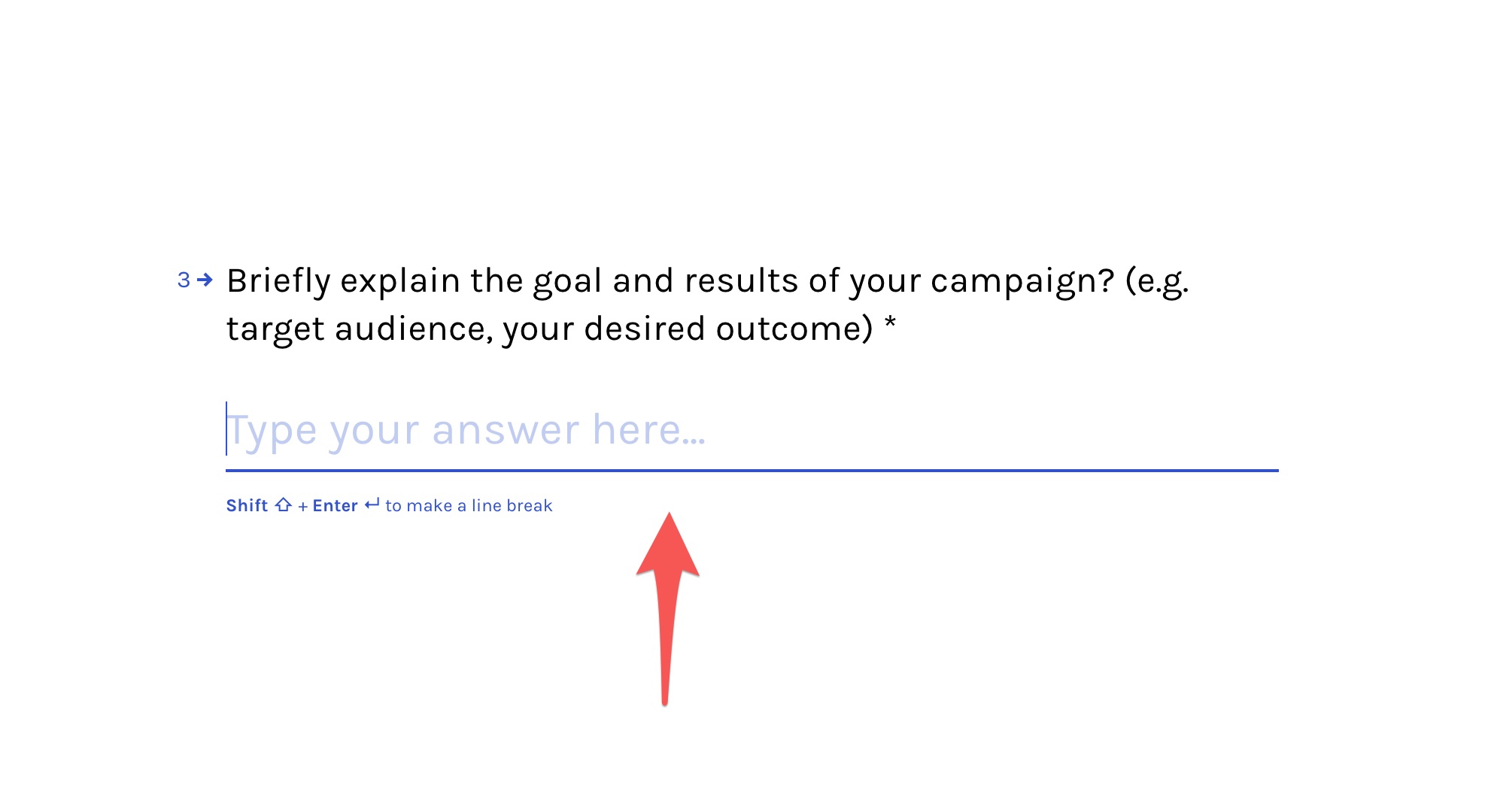
I kind of want to buy just so I can be featured to feed my ego, get exposed to lemlist’s audience and pick up that juicy backlink.
Each case study shares the challenge, why it worked and most importantly the results:
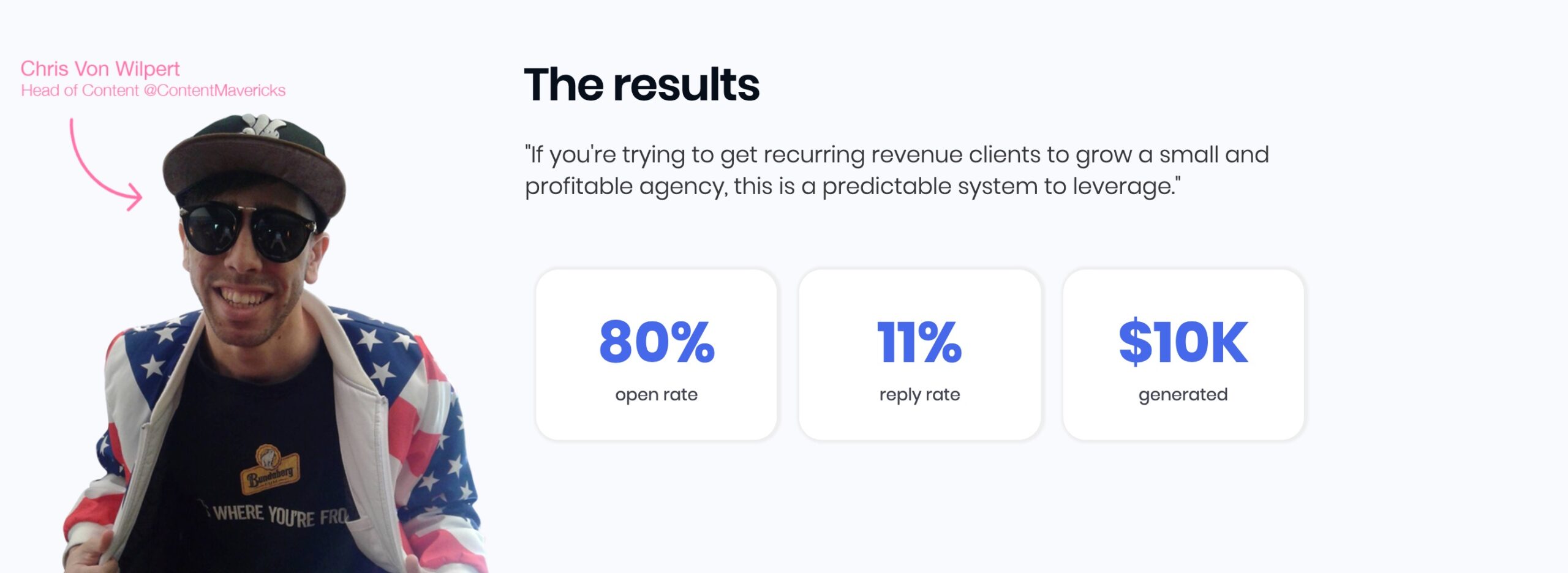
I’m also quietly confident that the “lemlister of the week” share rate on these beautifully design pages is above 50% e.g. over half of the people that get featured will share their case study with their own audience, community or customers.
Though the real value for the marketer here is that when anyone lands on the homepage, they are one click away from twenty four stories of people getting results from the product.
LEARNING: If you’re reading this and you’re a marketer: take back control of your case studies.
Growth Lever 9 – Don’t F*ck Up The Culture
With each of these case studies I always try to find the one underlying mindset or strategy most responsible for growth.
- With Document360 it was starting SEO early and dominating a category
- With VEED it was pure, bootstrapped hustle
- With ConvertKit it was their dynamic positioning
And with lemlist, one thing keeps coming back to me: the culture.
Everything Guillaume and lemlist does bleeds this unique vibe. The reason I use the word “vibe” is that it’s really hard to put a finger on.
It’s small touches like this:
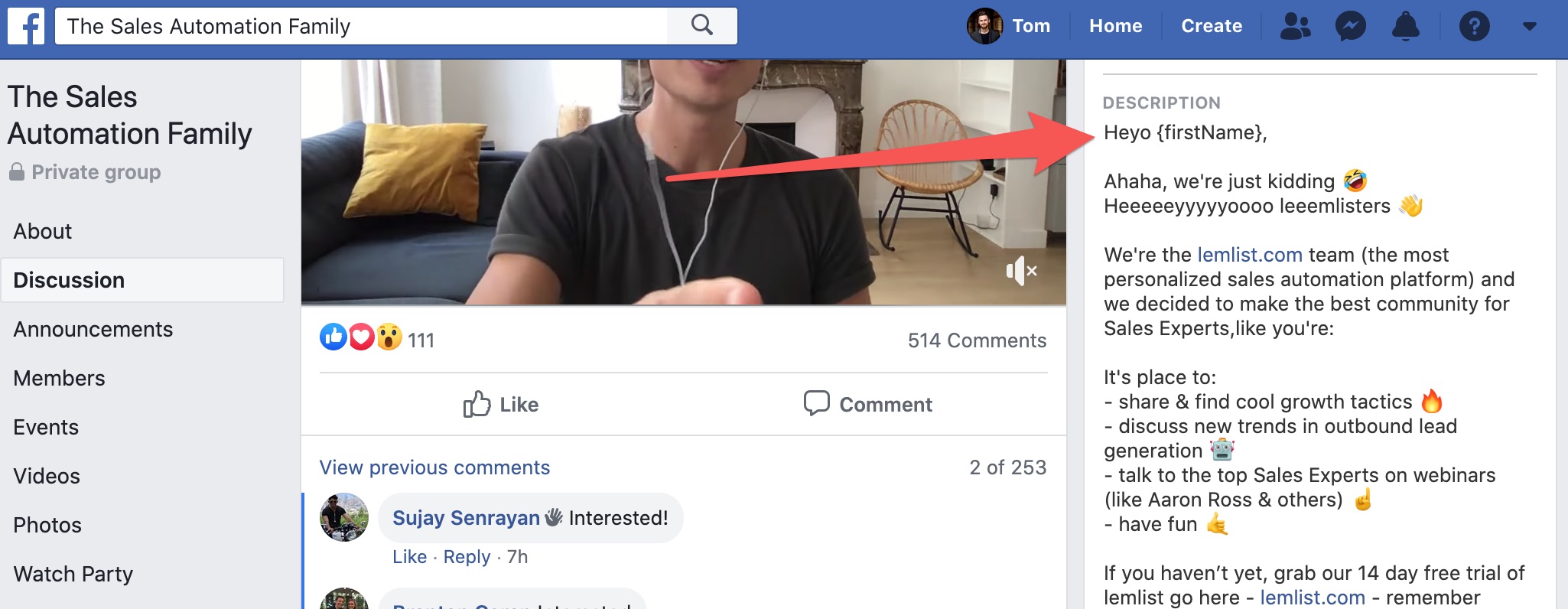
It’s the way Ugi adds his dog to his cold, backlink outreach:

And it’s how they include brand guidelines in their guest blogging instructions:

Even working with the lemlist team to interview Guillaume and request information for this case study felt consistent with those guidelines.
I think that as technology advances, more and more people will chose which SaaS to use not based on speed, features or functionality… but on brand, culture and values.
In the same way, you may choose Nike over Adidas because you like to “just do it”, you may choose lemlist over Outreach because you are also “Human (and cute)”.
Now either lemlist know this and are adopting this strategy purposefully as part of their SaaS marketing plan or this culture is actually true to the people driving the business forward.
I think the latter…
LEARNING: How would you define the culture at your SaaS? Share that with the world…
What did we learn?
- If you are an agency: start building software… and if your SaaS isn’t growing: start providing the manual service
- How can you go from MVP to awareness and then customers in the shortest time possible?
- How are you indoctrinating your community into the cult of your SaaS?
- Who is the face of your SaaS and how can you make them more famous?
- Throw out your “keyword strategy”, write up your brand guidelines and start trusting Google with your content…
- How can you inject dogs, coffee or some other emotional trigger in your cold outreach?
- Who has an audience of your perfect customers and how can you create content with them to expose your brand to this audience?
- If you’re reading this and you’re a marketer: take back control of your case studies.
- How would you define the culture at your SaaS? Share that with the world…
Which was your favourite Growth Lever, please leave a comment on Twitter or on the post below…
1/ Agency To SaaS
Hands down: the most effective way to build a SaaS businesses is to first provide the service with people.
Guillaume did exactly that… first service then #SaaS: pic.twitter.com/ZluxRCIXwt
— SaaS Marketer (@SaaS_Marketer) June 9, 2020
And be sure to add your email here to receive one of these case studies every two weeks.
Tom Hunt is the founder of SaaS Marketer and bCast (podcast hosting for marketers, by marketers). He lives and works in Hackney, London with his delightful partner Rebecca and little dog called Bear.



